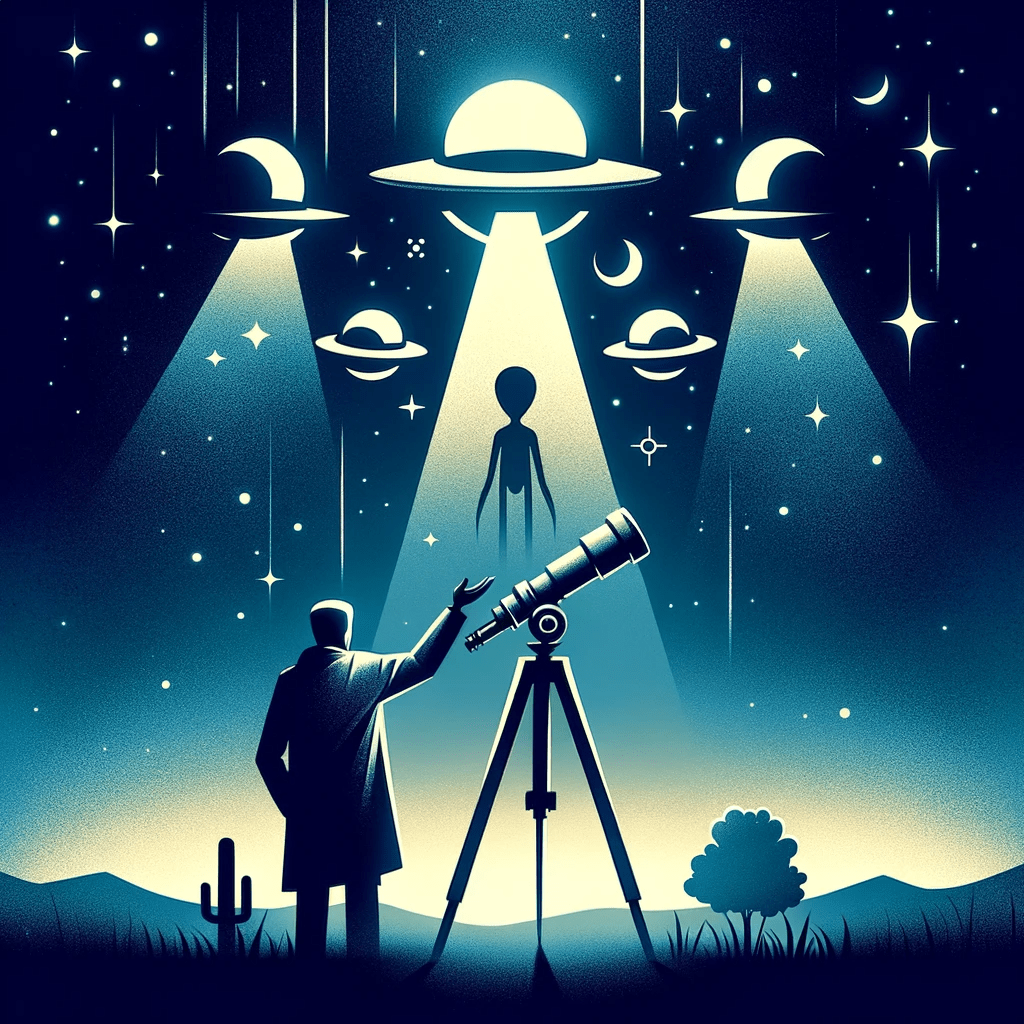Dr. J. Allen Hynek

Dr. J. Allen Hynek was an American astronomer and professor who was best known for his research and study of unidentified flying objects (UFOs) and his contribution to the field of ufology.
Hynek was born in Chicago in 1910 and received his Ph.D. in astronomy from the University of Chicago in 1935. He spent most of his academic career as a professor of astronomy at Ohio State University, and later at Northwestern University. Despite his background in astronomy, Hynek’s association with UFOs began in 1948 when he was contracted by the U.S. Air Force as a scientific consultant to evaluate reports of UFO sightings.
At first, Hynek was skeptical of the existence of UFOs, but as he investigated more cases, he became convinced that they were real and deserving of further scientific investigation. He soon became the go-to expert on UFO sightings, and he was involved in the Air Force’s Project Blue Book, which was an investigation into the phenomenon of UFOs from 1952 to 1969.
Through his work on Project Blue Book, Hynek encountered numerous UFO cases that could not be easily explained by conventional means. He came up with the “Close Encounter” classification system, which categorized UFO encounters into three types: close encounters of the first kind (visual sightings), close encounters of the second kind (physical evidence such as landed craft or radiation), and close encounters of the third kind (encounters with occupants). This classification system is still widely used in the field of ufology today.
In addition to his work on Project Blue Book, Hynek also conducted his own independent research into the phenomenon of UFOs. He wrote several books on the topic, including “The UFO Experience: A Scientific Inquiry” (1972), “The Hynek UFO Report” (1977), and “Night Siege: The Hudson Valley UFO Sightings” (1987).
After the end of Project Blue Book, Hynek continued to speak publicly about the importance of investigating UFO sightings, and he was a vocal critic of the official explanations offered by the U.S. government. He also founded the Center for the Study of Extra-Terrestrial Intelligence (CSETI) in 1990, which was an organization dedicated to promoting scientific investigation of UFO sightings and other paranormal phenomena.
Dr. J. Allen Hynek passed away in 1986, but his legacy continues to influence the field of ufology. His work helped to bring the phenomenon of UFOs into the mainstream and sparked a renewed interest in the scientific study of this mysterious and intriguing topic.
- Hynek’s initial skepticism about UFO sightings is said to have been influenced by his background as an astronomer. Astronomers at the time were trained to view the universe as a place of order and predictable behavior, and the idea of extraterrestrial visitors was considered absurd. However, as he investigated more cases, he became convinced that there was something real and mysterious about the UFO phenomenon. (Source: “The UFO Experience: A Scientific Inquiry” by J. Allen Hynek)
- Despite being an astronomer, Hynek was a lifelong lover of science fiction, and he often compared the UFO phenomenon to the science fiction stories he loved. He was particularly drawn to the idea of interstellar travel and the possibility of contact with extraterrestrial life. (Source: “The Hynek UFO Report” by J. Allen Hynek)
- Hynek’s work on Project Blue Book was not without controversy. He was often criticized by skeptics for not being skeptical enough, and he was also accused of being a government shill. However, he maintained that his goal was to study the UFO phenomenon objectively and scientifically, and he believed that the U.S. government was not taking the phenomenon seriously enough. Despite the criticism, Hynek continued to speak out about the importance of investigating UFO sightings and promoting scientific inquiry into the topic. (Source: “Night Siege: The Hudson Valley UFO Sightings” by J. Allen Hynek)
Dr. J. Allen Hynek was a pioneering figure in the field of ufology, and his contributions to the study of UFO sightings have had a lasting impact on the way that this phenomenon is viewed and studied. His work helped to bring the topic of UFOs into the mainstream, and his legacy continues to inspire researchers and enthusiasts to pursue the scientific investigation of this mysterious and intriguing topic.



